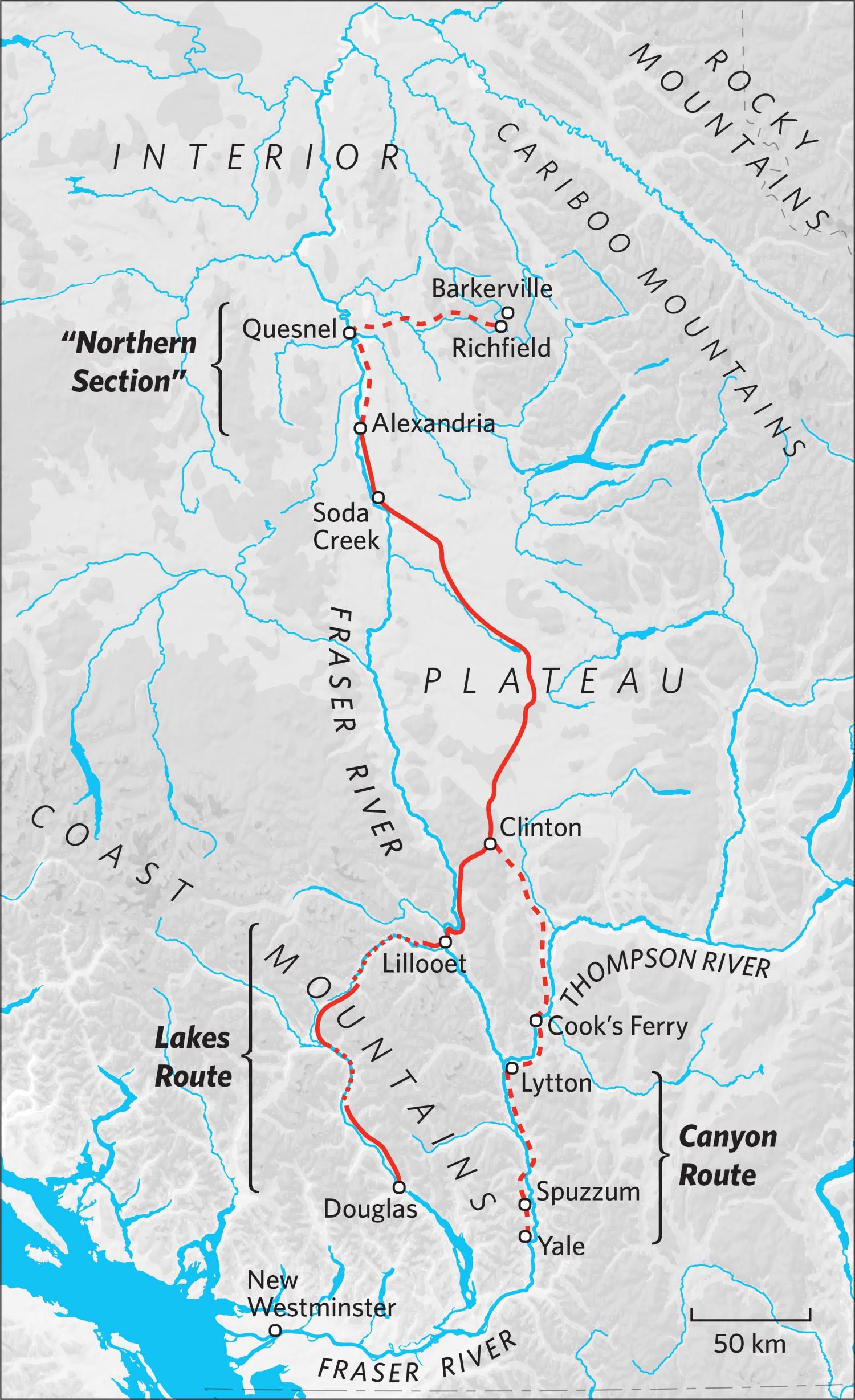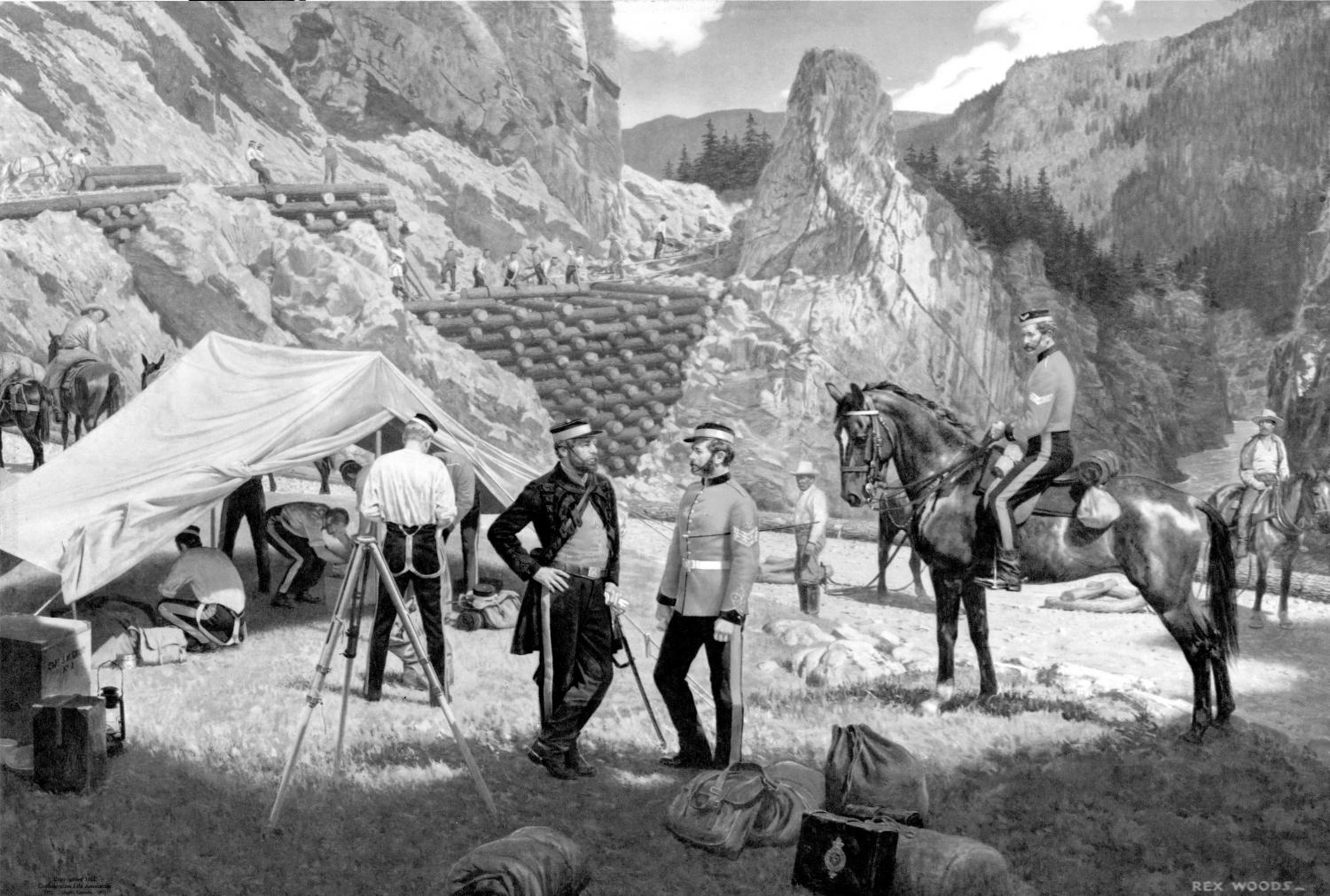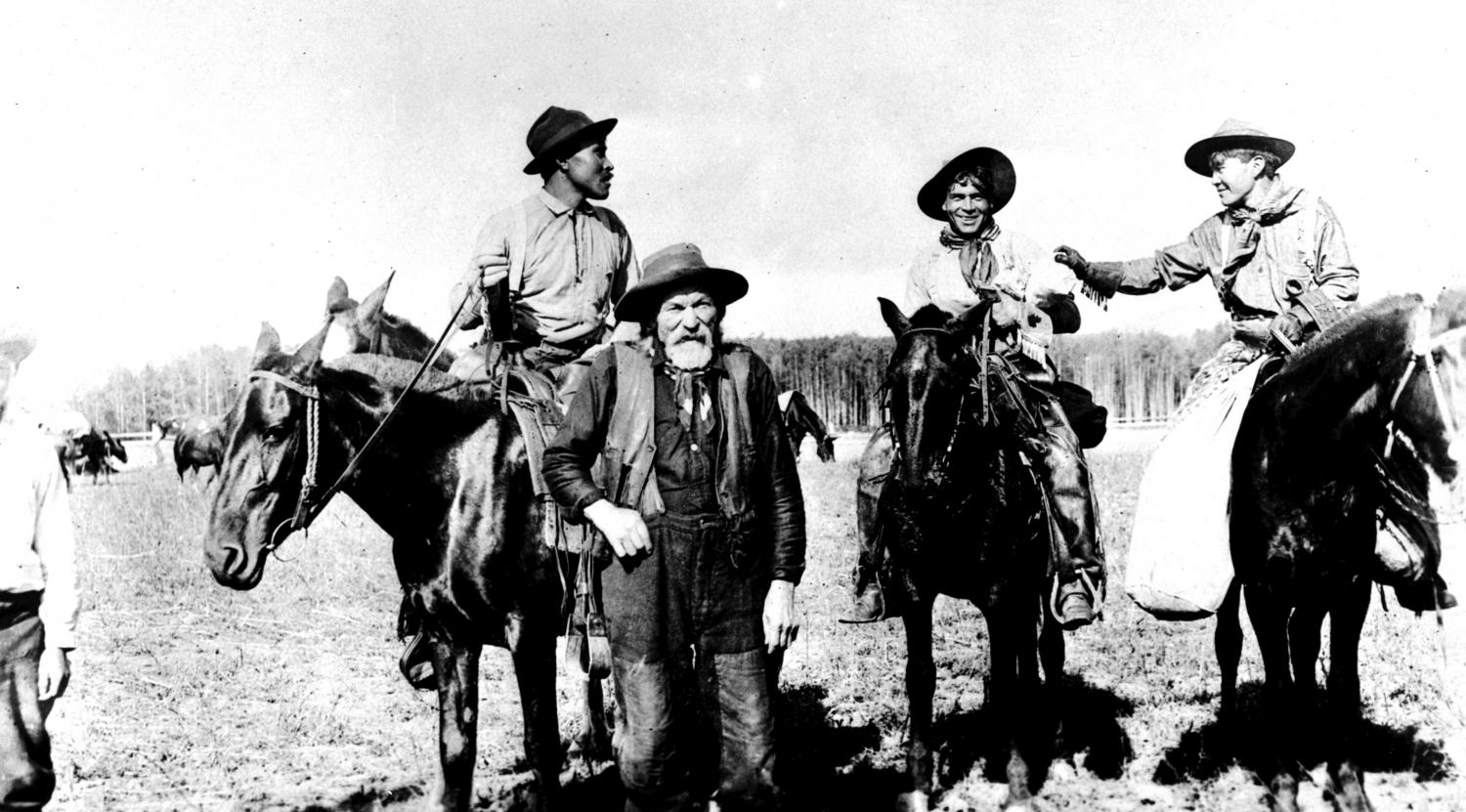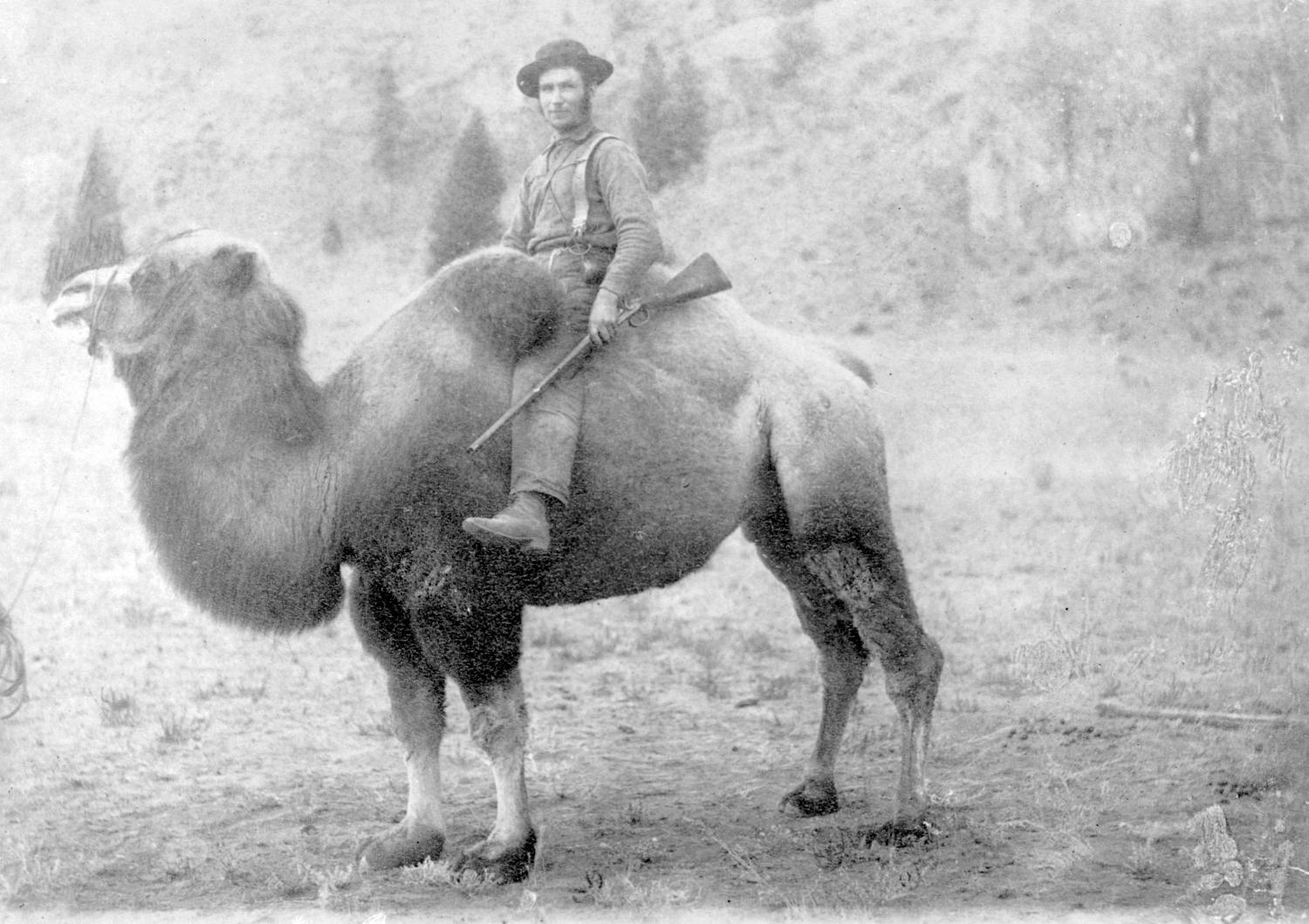The Cariboo Wagon Road
B.C.’s first megaproject, “the eighth wonder of the world”
Date: 1862
In September 1860, the Colony of British Columbia’s fate “hung by a thread,” according to the man overseeing the mainland territory, Governor James Douglas. Two years into the Fraser Canyon Gold Rush, and months before the Cariboo Gold Rush kicked off, he believed the territory’s abundance of gold was “the only thing that [could] save it from ruin.”
But gold didn’t come without complications. Douglas feared the waves of armed American miners pouring into the hinterland might encourage the United States to wrest the territory away from the British. Miners had already skirmished with local Indigenous during the Fraser Canyon War. In order to assert greater control over the colony and support the gold rushes, he invested heavily in public infrastructure. A wagon road — or, technically, several — connecting the lower reaches of the mainland to the Interior’s goldfields would be at the heart of it all.
Until the Cariboo Wagon Road was built, prospectors and packers — those transporting goods — relied upon river travel and narrow, steep paths forged by Indigenous inhabitants. The newcomers, however, were far less adept than their native counterparts. Many fell to their death from the high cliffs of the Fraser Canyon. The rushing rapids of British Columbia’s northern rivers also stopped boats from delivering much-needed supplies to booming new towns like Barkerville, driving up the price of goods. Douglas wanted to address these issues and maintain a monopoly on the flow of freight entering the mining regions. His “all-British” route would eventually comprise a handful of roads starting in the frontier town of Yale, just north of Hope, continuing through burgeoning settlements, like Lytton and Soda Creek, before reaching Barkerville, the centre of the Cariboo Gold Rush.
In autumn of 1861, work began on the first stretch of road, a precarious, 19-kilometre run between Yale and Spuzzum. The Corps of Royal Engineers, a group of technically-skilled British soldiers, used dynamite to blast through the walls of the Fraser Canyon. B.C.’s first megaproject was everything that term has come to mean: ambitious and expensive. The cost of the wagon road — and other public works projects initiated by Douglas — would come to overwhelm the colony’s finances. But the project was a boon for the contractors involved, including B.C.’s first Lieutenant Governor Joseph Trutch, who made a fortune off cash subsidies and road tolls.
The diverse group of men who built the road reflected the sense of wonder this fledgling British outpost had struck in adventurers the world over. The United States, Europe, Hawaii and China were all represented, as were local Indigenous. Many road builders were out-of-work miners. But contractors also brought over some road builders, many from China, a practice that would repeat itself during the construction of the Canadian Pacific Railway in the 1880s. The final stretch of road, connecting Cottonwood to Barkerville, was completed in 1865 — after the Cariboo Gold Rush had already peaked. Estimates vary, but the route’s entire distance lies somewhere between 650 and 800 kilometres. Historians peg the final price tag between $1,250,000 and $1,500,000 in 1860s currency.
While Douglas believed gold would be his colony’s salvation, the frenzy didn’t last. By 1865, traffic on the wagon road had slowed. And even when northbound freight was at its greatest in 1862, the revenue from road tolls was underwhelming. Douglas, who became obsessed with the project during his final years as governor, doubled the toll charges the following year. But the increase didn’t do much to help the colony, which had funded the project through massive bank loans. The staggering debt eventually pushed the mainland to unite with the Colony of Vancouver Island in 1866. By 1871, the united Colony of British Columbia joined Canada for the same reason.
Sources:
-
Barman, Jean. The West beyond the West: a History of British Columbia. Langara College, 2003.
-
The Cariboo Wagon Road. Royal B.C. Museum, royalbcmuseum.bc.ca/exhibits/bc-archives-time-machine/galler04/frames/road.htm.
-
CBC Digital Archives: One of Canada's Earliest Roads: the Cariboo. CBC News, www.cbc.ca/archives/entry/one-of-canadas-earliest-roads-the-cariboo.
-
Downs, Art. Cariboo Gold Rush: the Stampede That Made BC. Heritage, 2013.
-
Forsythe, Mark, and Greg Dickson. The Trail of 1858: British Columbia's Gold Rush Past. Harbour Publ., 2008.
-
Howay, F. W. “The Work of the Royal Engineers in British Columbia, 1858-1863.” UBC Library, Richard Wolfenden, 1910, open.library.ubc.ca/collections/bcbooks/items/1.0348596#p23z-1r0f:wonder.
-
Leonard, Frank. “Eighth Wonder of the World:” The Cariboo Wagon Road as British Columbia’s First Megaproject. Journal of the Canadian Historical Association, 1 Nov. 2016, www.erudit.org/en/journals/jcha/2016-v27-n1-jcha03132/1040528ar.pdf.
-
Peebles, Frank. Local Author Releases Sixth Book. Prince George Citizen, 17 Apr. 2013, www.princegeorgecitizen.com/news/local-news/local-author-releases-sixth-book-1.1038077.
-
Roden, Barbara. Golden Country: The Cariboo Wagon Road Part Two. Ashcroft Cache Creek Journal, 26 June 2018, www.ashcroftcachecreekjournal.com/community/golden-country-the-cariboo-wagon-road-part-two/.
-
Sale, T.D. “The Old Cariboo Wagon Road: Early Travel On The Cariboo Highway To 1943.” British Columbia Historical News, Volume 18, No. 1, 1984.







